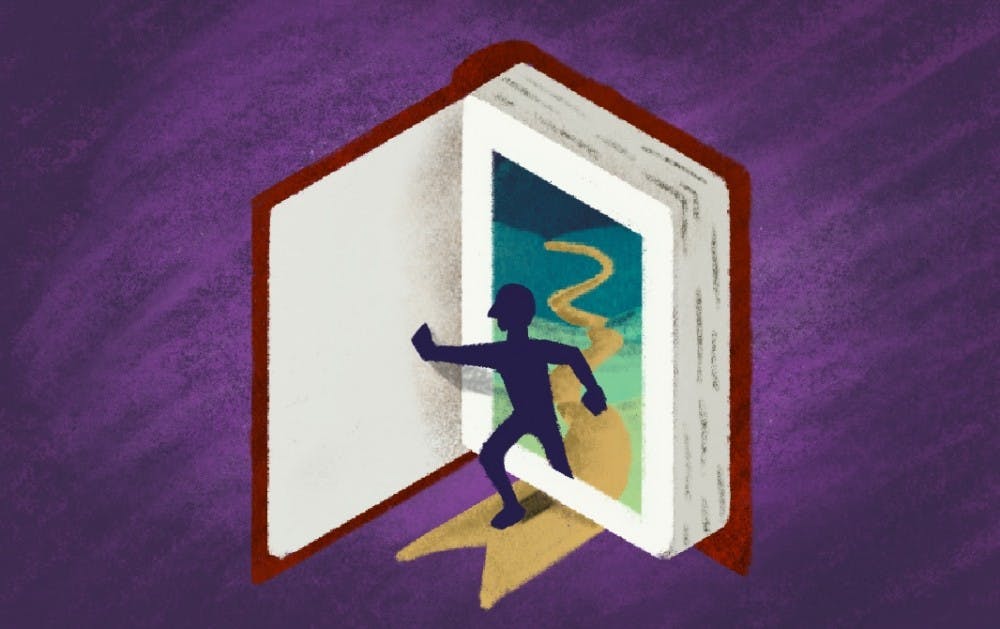In this series, Echo reporter Chris Clements sits down with ASU literary figures to talk about their writing styles and gives their techniques a try.
Electric.
That’s the best word to describe Tara Ison’s fiction writing.
Her writing is like the smell of burning rubber after a car skid, a jarring, lively kick-in-the-pants that holds a microscope to its characters instead of offering a bird’s-eye view.
So it’s no surprise that Ison, a novelist, screenwriter and professor of English at ASU, wants her readers to live in the little details.
“With really close interiority — either with a first-person narrator, or a really close, very subjective third-person — I want to capture the synaptical firings of what is going on in the character’s brain while they’re thinking,” Ison said. “I like trying to capture a chain of thought. A character starts in one place, thinking about something, but you know our minds take us in odd directions, whether we want it to or not.”
Ison’s short fiction, book reviews, essays and poetry have been featured in publications including Tin House, Salon and The Los Angeles Review.
Part of the charm in Ison’s writing style is the explosive impact of her descriptions, like those found in her 2007 novel The List.
“She isn’t the heart in the dream; she’s the propelled blood,” Ison wrote. “She’s venous blood, a textbook royal blue, deoxygenated and exhausted, flowing into the right atrium from the superior vena cava.”
When she was young, the supposed glamour and ease of being a fiction writer drew Ison into the profession.
“I joke sometimes that I wanted to be a writer long before I wanted to write,” she said. “I fell in love with the image of writers that I saw in movies and television. They all had beach houses. It just seemed very exciting, and that’s, of course, because in a movie you don’t see the work of writing.”
While attending the University of California, Los Angeles as an English major, Ison said she “stumbled into the professional life of being a writer.”
“I started working on scripts nights and weekends my last year of undergrad with a friend of mine,” she said. “We sold a script two months after I graduated college. So for seven years, I was a screenwriter.”
Working on scripts like the 1991 cult classic movie "Don’t Tell Mom the Babysitter’s Dead" instilled in Ison a new way of thinking about storytelling, one that focused on three-act cinematic structure, narrative momentum and the power of imagery.
Another defining characteristic of Ison’s work is the relative paucity of direct dialogue between her characters — instead, she focuses on “a kind of interiority that dips sometimes into stream-of-consciousness.”
Ison said stream-of-consciousness, a literary technique that involves an uninterrupted flow of character feelings or thought, is different from the practice of writing down everything and anything that comes to a writer’s mind.
Stream-of-consciousness relies on precise grammatical accuracy to demonstrate a character’s thought patterns.
“Starting with the masters of (this style) is always a good idea: James Joyce, Virginia Woolf, Gertrude Stein,” Ison said. “This has been done before. We’re going back 100 years, if not longer.”
Click here for a full transcript of the podcast
By way of example, here’s my own attempt at this technique:
"All there was in that moment was the dull LED buzz the fluorescents were making overhead, a monotone 'hmmmm' that filled him up and made the edges of his vision blurry with concentration, like when you’re about to pass out, and maybe he’d merge with that high-pitched quarter-tone whine and disappear, a transfiguration of his body into the sound and the sound into his body, shifting back and forth between the two until it would be impossible to tell which was which. Maybe then those memories would leave him be."
Ison’s advice for students hoping to perfect this technique, and fiction writing in general, is simple: “Do whatever gets you writing.”
While she admits to being averse to the process of writing as a whole, Ison added that occasionally, the need to get something down on paper is compulsive and irrepressible.
“It has happened where I have awakened in the middle of the night, 3:00 a.m., with a sentence in my head,” she said. “I get up and I write it down — I don’t know what it is. I don’t know where in the story it belongs, I don’t know anything, but I can’t let go of it.”
Reach the reporter at Christopher.Clements@asu.edu or follow @ChristopherJCI8.
Like The State Press on Facebook and follow @statepress on Twitter.




